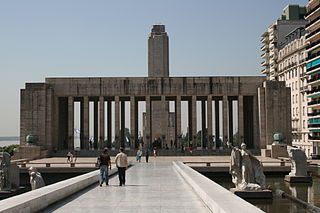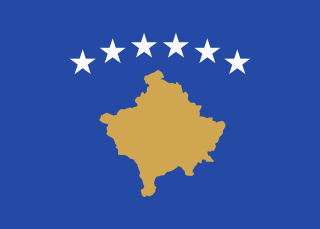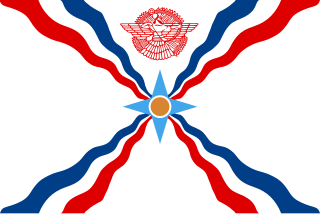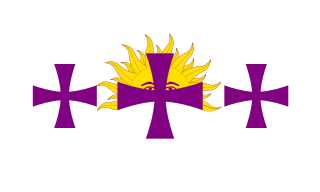Individual flags
-
 Media related to Cultural flags at Wikimedia Commons
Media related to Cultural flags at Wikimedia Commons-
 Media related to Flags of ethnic groups at Wikimedia Commons
Media related to Flags of ethnic groups at Wikimedia Commons -
 Media related to Flags of active autonomist and secessionist movements at Wikimedia Commons
Media related to Flags of active autonomist and secessionist movements at Wikimedia Commons -
 Media related to Native American flags in Latin America at Wikimedia Commons
Media related to Native American flags in Latin America at Wikimedia Commons -
 Media related to Native American flags in the United States at Wikimedia Commons
Media related to Native American flags in the United States at Wikimedia Commons
-
| image | name | group | world region | linguistic phylum | introduction | notes |
|---|---|---|---|---|---|---|
| | Flag of Scotland | Scottish | Europe, North | Indo-European, Germanic, Anglic, Scottish Gaelic | 1385 | The saltire appears to have become the official national flag in 1385 when the Parliament of Scotland agreed that Scottish soldiers should wear the white cross as a distinguishing mark. |
| | Flag of the Mapuches | Mapuche people | America, South | Araucanian, Mapudungun | 1506; 1991 | Original adopted during the Arauco War between the Mapuche and the Spaniards; a simple blue field with a white Guñelve (Mapudungun: Wünelfe) star centered, representing the Morning Star. The modern rendition approved by Aukiñ Wallmapu Ngulam, also known as Council of All Lands, in 1991. It was chosen in a contest of 500 entries, and is called Wenufoye (in Mapudungun "The Heaven's Winter's Bark"); however, instead of the Guñelve star, a Kultrum (Mapuche drum) is centered. |
| | Bhagwa Dhwaj | Hindu Nationalism/Hindutva and Marathi | Indian subcontinent | Indo-Aryan, Dravidian | 1674 | Specific design was first used by the Maratha Empire, and currently used by the Rashtriya Swayamsevak Sangh. Similar saffron-coloured designs also used by the Sikh Khalsa. |
| | A bandera Corsa | Corsicans | Europe, West | Indo-European, Romance, Corsican | 1755 | From an older tradition, but with uncertain origins, this banner was officially adopted by the Corsican Republic of Pasquale Paoli. |
| | Métis flag | Métis people | America, North | mixed; Michif | 1814 | Received from Alexander Macdonnell of the North West Company in 1814 and used by the Canadian Métis resistance in the Battle of Seven Oaks (1816). [7] |
| | Circassian Flag | Circassians | Europe, Caucasus | Northwest Caucasian, Adyghe | 1830; 1992 | Used by Circassians since the 19th century and Adygea since 1992. |
| | Flag of Hawaii | Native Hawaiians | Polynesia | Austronesian, Hawaiian | 1845 | Adopted by the Kingdom of Hawaii, and continued to be used by the protectorate, republic, and territory before statehood. The flag was last modified in 1898, and is noteworthy as still being used after the 1893 overthrow of the Hawaiian Kingdom. |
| | Flag of Ireland | Irish | Europe, North | Indo-European, Celtic, Irish Gaelic | 1848 | Thomas Francis Meagher commented in 1848: "The white in the centre signifies a lasting truce between Orange and Green and I trust that beneath its folds the hands of Irish Protestants and Irish Catholics may be clasped in generous and heroic brotherhood." It was confirmed as the National Flag in 1937. [8] |
| | Pan-Slavic colours | Slavs | Europe, Eastern | Indo-European, Slavic | 1848 | Adopted by the Prague Slavic Congress, 1848, used as the ethnic flag of Sorbs, Moravians, and other Slavic-speaking minorities. |
| | Flag of the Choctaw Nation | Choctaw people | America, North | Muskogean, Western | 1860; 1970s | First flag adopted in 1860 before the United States Civil War, becoming the first Native American Tribe to adopt a flag; the second form was approved by the Tribal Council in the 1970s and altered in the late 1980s to present form. |
| | Flag of Tonga | Tongans | Polynesia | Austronesian, Tongan | 1875 | The only ethnically Polynesian nation to never relinquish its sovereignty to any foreign power. The constitution states the flag can never be changed. |
| | Flag of Acadia | Acadians | America, North | Indo-European, Romance, French | 1884 | Adopted at the Second Acadian National Convention held in Miscouche, Prince Edward Island, on 15 August 1884. |
| | Ikurriña | Basque people | Europe, West | Basque | 1895 | Designed in 1894 for the province of Biscay, adopted in 1895 by "Euzkeldun Batzokija" (predecessor of the Basque Nationalist Party), adopted it as the flag of the Basque Autonomous Region in 1936, prohibited in Francoist Spain 1938–1977, official adoption as the flag of the Basque Country in 1978. |
| | Flag of Zion | Jews | Asia, Western | Afro-Asiatic, Semitic, Hebrew | 1898 | Introduced as the flag of Zionism at the Second Zionist Congress held in Switzerland in 1898; adopted as the state flag of Israel in 1948. |
| | Flag of Tibet | Tibetans | Asia | Tibetic | 1916 | |
| | Flag of the Arab Revolt | Arabs | Asia, Western Africa, Northern | Afro-Asiatic, Semitic, Arabic | 1917 | Introduced as the flag of the Arab nationalist revolt against the Ottoman Empire and the Kingdom of Hejaz in 1917. It became the basis of a number of flags using the Pan-Arab colors later in the 20th century.[ original research? ] |
| | Crimean Tatar flag | Crimean Tatars | Europe, Eastern | Turkic, Crimean Tatar | 1917 | Introduced under the Crimean People's Republic (November 1917), now used as ethnic flag. [9] |
| | Flag of Armenia | Armenians | Europe, Western Asia | Indo-European | 1918 | The Armenian Supreme Soviet adopted the current flag on 24 August 1990. On 15 June 2006, the Law on the National Flag of Armenia, governing its usage, was passed by the National Assembly of Armenia. |
| | Estelada | Catalans | Europe, West | Indo-European, Romance, Catalan | 1918 | The flag was designed in 1918 by Vicenç Albert Ballester i Camps. [10] It came from combining the traditional four red stripes over a yellow field of the Catalan Senyera with a blue triangle at the hoist containing a five-pointed white star, inspired by the flags of Cuba, the Philippines and Puerto Rico; the lone star motif symbolizes Catalan independence. |
| | Flag of Upper Silesia | Silesians | Europe, Central | Silesian | 1919 | Similar to the former flag of the Province of Upper Silesia. A popular symbol of the Movement for Silesian Autonomy. |
| | Pan-African flag | Black People | Black diaspora | — | 1920 | Adopted in 1920 by the Universal Negro Improvement Association and African Communities League, now used in black nationalism and Pan-Africanism. |
| | Flag of the Swedish-speaking Finns | Finland-Swedes | Europe, Northern | Indo-European, Germanic, Swedish | 1922 | Used by the Swedish People's Party of Finland from 1922, based on a 1917 design. [11] |
| | Flag of Livonians | Livonians | Europe, Northern | Finnic, Livonian | 1923 | Used by Livonian Society (Līvõd Īt) in 1923. |
| | Flag of New Mexico | Neomexicanos | America, North | Indo-European, Romance, Spanish | 1925 | |
| | Flag of Oklahoma | Okies | America, North | Indo-European, Germanic, English | 1925 | |
| | Flag of the Kurds | Kurds, Kurdish nationalism | Asia, Western | Indo-European, Indo-Iranian, Iranian, Kurdish | 1927 | Used by the Republic of Ararat in 1927, based on earlier designs used in the 1890s revolt. |
| | Flag of the Korean National Association | Koreans | Asia, Eastern | Korean | 1928 | Designed by Yong-man Park. Due to the inherently ethnic nature of Korean nationalism, the South Korean flag is also seen and used as a de facto pan-Korean ethnic flag by many South Koreans. [6] [5] |
| | Hispanic flag | Hispanidad, La Raza | Americas | Indo-European, Romance, Spanish | 1932 | Winning entry in a contest organized by Juana de Ibarbourou in 1932. |
| | Flag of the Romani people | Romani people | Europe | Indo-European, Indo-Iranian, Indo-Aryan, Romani | 1933 | Introduced by the General Union of the Roma of Romania in 1933, adopted at the First World Romani Congress in 1971. |
| | Flag of East Turkestan | Uyghurs | Asia | Turkic | 1934 | |
| | Malay tricolour | Malay people, Malayness | Asia, Southeast | Austronesian, Malay | 1946 | Introduced by the United Malays National Organisation (1946). |
| | Fleurdelisé | Québécois people | America, North | Indo-European, Romance, French, Quebec French | 1948 | Adopted by the government of Quebec during the administration of Maurice Duplessis. |
| | Druze flag | Druze | Levant, West Asia | Semitic | 1948 | Adopted by the Druze Mental Chiefdom based on "Five Limits Star Druze Star. |
| | Flag of the Danube Swabians | Danube Swabian | Europe | Germanic | 1950 | A coat of arms designed in 1950 by Hans Diplich has been adopted by many Danube Swabian cultural organizations. [12] [13] Its blazon is "Parti per fess wavy 1 Or, an eagle displayed couped Sable langued Gules; 2 parti per fess Argent and Vert, a fortress Argent roofed and turreted Gules surmounted with Sun and Crescent waning Or; chief wavy Azure". |
| | Flag of Somalia | Somalis | Africa, Horn | Somali | 1954 | Used by the Somali Republic after independence from the UK and Italy, Blue field with the Star of Unity |
| | Naga National Flag | Nagas | Asia, South | Sino-Tibetan | 1956 | The flag was first hoisted on 22 March 1956 at Parashen, Rengma Region by proclaiming the Federal Government of Nagaland (FGN). [14] |
| | Flag of Occitania | Occitans | Europe, West | Indo-European, Romance, Occitan | 1959 | Inspired by the historic flag of the County of Toulouse, the modern rendition which included the seven-point star was designed by the Occitan Nationalist Party. |
| | Flag of the Oglala Sioux Nation | Oglala Lakota | America, North | Siouan, Teton Sioux | 1961 | The circle of eight teepees on the flag represent the nine districts of the reservation: Porcupine, Wakpamni, Medicine Root, Pass Creek, Eagle Nest, White Clay, LaCreek, Wounded Knee, and Pine Ridge. The red field represents the blood shed by the tribe in defense of their lands. |
| | Flag of Tsėhéstáno | Notameohmésêhese | America, North | Algic, Plains Algonquian | 1964 | The decorative glyph of the Morning Star, a traditional icon of Cheyenne art, centered on a light blue field, represents the Northern Cheyenne. |
| Black american heritage flag | African-Americans | America, North | English, Ebonics, Tutnese, Gullah | 1967 | The flag was created in 1967 by Melvin Charles and Gleason T. Jackson. [15] The idea to create the flag came about when Charles realized that every other group of people had a flag at parades except Black Americans. He designed the flag alongside Jackson and they would later travel the country to visit various churches, schools, and public events to promote the flag. [16] The color red represents the blood shed by African Americans for freedom and equality in America. The color black represents pride in the black race. The color gold represents intellect, prosperity, and peace. [15] | |
| | Flag of Biafra | Igbo people | Africa, West | Niger-Congo, Igbo | 1967 | Flag of the irredentist Republic of Biafra, after 1970 used as ethnic flag. [17] |
| | Flag of the Navajo Nation | Navajo people | America, North | Southern Athabaskan | 1968 | The black, white, turquoise, and yellow colors of the four sacred mountains come from the Navajo creation story, while the overall flag recalls sand painting, and a rainbow symbolizing Navajo sovereignty. In 1995 the Navajo flag became the first Native American tribal flag in space when Bernard Harris carried it aboard the space shuttle Discovery. |
| | Assyrian flag | Assyrian people (Syriac Christians) | Asia, Western | Afro-Asiatic, Semitic, Aramaic | 1971 | A 1968 design adopted by the Assyrian Universal Alliance in 1971. |
| | Australian Aboriginal Flag | Aboriginal Australians | Australia | Australian | 1971 | Designed in 1971, given official recognition by the Australian authorities in 1995. |
| | Dáayaangwaa Haida Gwaii | Haida people | America, North | Haida | 1974 | Adopted in 1974 by the Council of the Haida Nation. A red field with an eagle and raven headed bird, surrounded by a circlet, charged in the centre, all in traditional Northwest Coast artform. |
| | Flag of Acadiana | Cajuns | America, North | — | 1974 | |
| | Flag of the Pawnee Nation | Pawnee people | America, North | Caddoan, Pawnee | 1977 | A wolf's head above a crossed tomahawk and peace pipe, which recalls the tribe's name. Below are six arrowheads for the six wars in which Pawnee have fought in the service of the United States. |
| | Flag of the Cherokee Nation | Cherokee people | America, North | Iroquoian | 1978 | The seven-pointed stars represent the seven clans of the Cherokees, while the black star represents those lost on the Trail of Tears. |
| | Flag of Haudenosaunee | Iroquois | America, North | Iroquoian | 1980s | Based on the Hiawatha Belt, the four squares and one tree represent the original five nations of the Confederacy, and the tree also represents the Tree of Peace. |
| | Aramean-Syriac flag | Arameans (Syriac Assyrians) | Asia, Western | Afro-Asiatic, Semitic, Aramaic | 1980 | Used by the Bahro Suryoyo journal in 1980. |
| | Sami flag | Sami people | Europe, Northern | Finnic, Sami | 1986 | Adopted by the 13th Nordic Sami Conference on 15 August 1986. |
| | Louisiana Creole flag | Louisiana Creoles | America, North | Afro-Creole | 1987 | |
| | Flag of Greenland | Greenlandic Inuit | Arctic | Greenlandic | 1989 | The only national flag of a Nordic country or territory without a Nordic Cross. |
| | National Māori flag | Māori people | Oceania, New Zealand | Austronesian, Maori | 1990 | Designed in 1990 and made the subject of an activist campaign until its official recognition by New Zealand authorities in 2009. |
| | Flag of Artsakh | Artsakhi Armenians | Europe, Western Asia | Indo-European | 1992 | The tricolor design comes from the original Armenian flag, while the white pattern represents the mountains of Artsakh, and also forms an arrow pointing westward to symbolize the aspiration for eventual union with Armenia. |
| | Bosanski Ljiljan | Bosniaks [18] | Europe, South | Serbo-Croatian | 1992 | Formerly the national flag of Bosnia and Herzegovina until 1998. [19] |
| Flag of Torres Strait Islands | Torres Strait Islanders | Australia | Creole, Torres Strait Island | 1992 | Recognised by the Aboriginal and Torres Strait Islander Commission in June 1992, granted official status Australia in 1995. | |
| | Flag of the West Herzegovina Canton | Bosnian Croats [20] | Europe, South | Serbo-Croatian | 1992 | Formerly the flag of the Croatian Republic of Herzeg-Bosnia from 1992 to 1996. |
| | Flag of Merina people | Merina people | Africa, Madagascar | Austronesian, Malagasy | 1997 | Since 1997. [21] |
| | Berber flag | Berbers | Africa, North | Afro-Asiatic, Berber | 1998 | Adopted by the World Amazigh Congress based on 1970s proposals by the Berber Academy. |
| | Chaldean flag | Chaldean-Assyrians | Asia, Western | Afro-Asiatic, Semitic, Aramaic | 1999 | Approved by the International Chaldean Association of Professional Visual Artists and various other Chaldean organisations. [22] Designed by Amer Fatuhi. |
| | Flag of the Hopi Tribe | Hopi people | America, North | Uto-Aztecan | 2002 | [23] |
| | Flag of Serbs of Croatia | Serbs of Croatia | Europe | Serbo-Croatian | 2005 (1997 in eastern Croatia) | Adopted by the Serb National Council (2005) and the Joint Council of Municipalities (1997) |
| | Flag of Rapa Nui | Rapa Nui people | Polynesia | Austronesian, Rapanui | 2006 | A similar flag was used from the 13th century until 1899 during its period of independence. |
| | Tornedalians Flag | Tornedalians | Europe, Northern | Finnic | 2007 | |
| | Flag of the Iraqi Turkmen | Iraqi Turkmen/ Turkmeneli | Asia | Turkic | 2007 | This flag, with a white star and crescent and two white horizontal stripes on a light blue background, was first adopted as Flag of Iraqi National Turkmen Party in 2007, [24] a constituent political party of the Iraqi Turkmen Front. |
 | Andean Wiphala | Aymara people (Indigenous Bolivians) | America, South | Aymaran Quechuan | 2009 | Article 6, section II of the Constitution of Bolivia established the southern Qullasuyu Wiphala as the dual flag of Bolivia. [25] [26] |
| | Flag of the Aromanians | Aromanians | Europe, Balkans | Indo-European, Romance | Unknown | Variations of this flag exist according to the country in which the Aromanians are located. [27] |
















